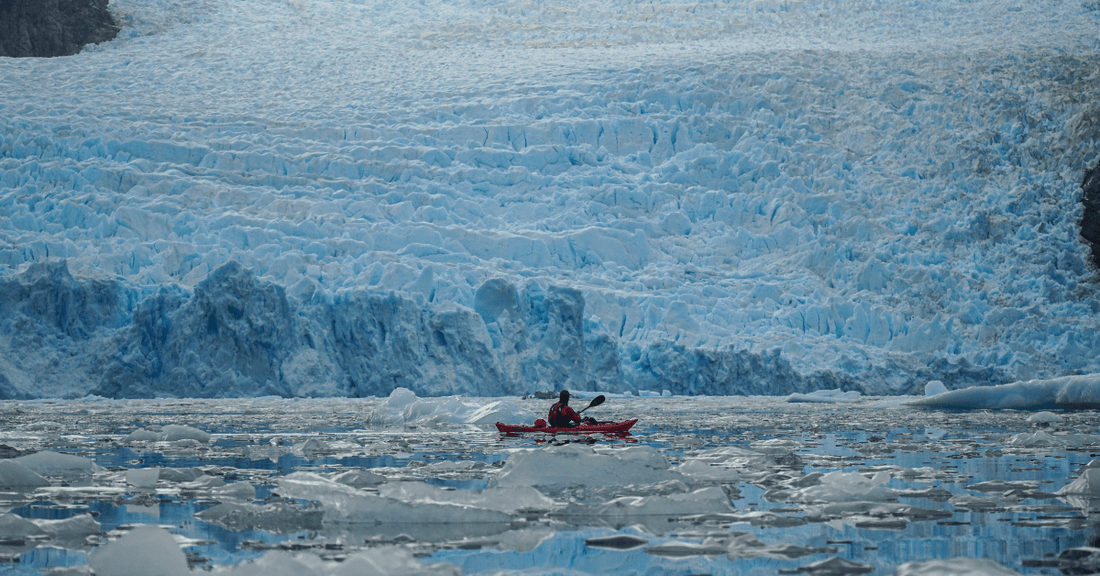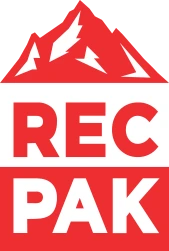
32 Days Through Patagonia's Fjords: An Expedition That Won’t be Forgotten.
Share
The plan was ambitious: paddle 900 kilometers through some of the most isolated waters on Earth. For Andy Gill and his mates Matt Schweizer and Brody Duncan, the western fjords of Patagonia represented the ultimate test, not just of their sea kayaking skills, but of their gear, planning, and ability to remain self-sufficient for over a month in one of the planet's most unforgiving environments.
Into the Unknown
The expedition began in Puerto Edén, a remote Chilean fishing village where the team underwent naval inspection before launching into the labyrinth of fjords that would become their world for the next 32 days. The route they chose had been attempted by fewer than 15 people, following variations of a path through the western spine of the Patagonian mountains where massive glaciers calve directly into the sea.
"Once you start paddling from Puerto Edén, you have no other villages, no other civilization to come across," Gill explains from his home in Scotland, still processing the magnitude of what they'd accomplished. "There's no help. There are no people out there."

The isolation was profound, at their most remote point, they were 450 kilometers from the nearest road by water, though only 20 kilometers as the crow flies over the Patagonian ice cap. It's the kind of distance that makes every decision carry weight, every piece of gear a potential lifeline.
When Equipment Becomes Everything

Surprisingly, Patagonia's legendary weather wasn't their biggest challenge. "We thought it was going to be the weather," Gill recalls. "We really did. But it was more just dealing with kit failures."
Matt's sleeping pad burst on night one, requiring constant patching throughout the trip. "He had 25 patches in his pad by the end of the trip," Gill says. "It was a design flaw. Every time you put pressure on it, it would just burst." The pad held air for only two nights out of 32, leaving Matt exhausted and frustrated.
Brody faced his own gear nightmare with a synthetic sleeping bag that trapped moisture. "It just wouldn't breathe. He'd wake up and it was wet and sweaty. He was pretty miserable at times just because he was cold and wet all night."
For Gill, his Hilleberg tent became a fortress against the elements. "I had a removable inner, and that was great. I could just take the inner out, keep it dry all the time, even if the rest of the tent was soaked. I always knew once I put that inner up, I'd be dry again inside it."
The Food Equation

Carrying 40 days of food while maintaining kayak stability created its own logistical puzzle. The team planned for 4,000 calories per day but fell short. "In hindsight, we really weren't anywhere near that. I think it was probably 2,500- 3,000 a day," Gill admits.
Their strategy focused on calorie-dense foods: dehydrated meals bulked up with mashed potato, 100 grams of butter per person daily, and carefully rationed treats. "We'd factored in two chocolate bars per day, and three or four would have been nice," he notes. A rookie error in chocolate selection, choosing 90-calorie wafer bars over 250-calorie Snickers, highlighted how small miscalculations compound over weeks.
On day 29, during a weather window, they tried RecPak for the first time. "I think just because you're drinking, you're putting so much liquid into it, it definitely fills you up and rehydrates you," Gill observed. "All three of us definitely noticed the extra 700 calories that day." The convenience factor proved crucial during their typically rapid lunch stops of just five to ten minutes.
The Moment That Made It All Worth It
Halfway through their journey, at Seno Andrew Fjord, everything came together. After three days of complete whiteout conditions that left them paddling blind through a world of gray, the weather finally broke.
"The stars kind of aligned for one day," Gill recalls, his voice brightening at the memory. "It just started to clear and it blew; there were rainbows, there was sun, the clouds parted."
Paddling up the narrow fjord against a strong current, dodging icebergs grinding together in the flow, they turned a corner to reveal something extraordinary. "We just had this really impressive glacier going straight up into the ice cap with these big mountains. It was absolutely beautiful. The best day of paddling I've had."
They camped directly below the glacier among massive ice sculptures left by high tides. Having packed three beers for their halfway celebration, the timing couldn't have been more perfect. "It was just funny how it was the best campsite, and it was halfway, which meant we could have beers. It was like a nice mini victory for us. That was probably the highest we were feeling on the whole trip."
The Price of Adventure
Not everything went smoothly. A serious challenge emerged when both Gill and Matt suffered severe reactions to sandfly bites. Matt's hand swelled dramatically, showing signs of infection in an environment where wounds don't heal easily.
"There was one day we spent off the water for it to heal and it got worse," Gill remembers. "I was thinking, how often are these fishing boats passing? How quick are they going to get here if we need the Navy?" The incident added urgency to their final push, knowing that serious medical issues in such isolation could turn catastrophic.
Earned Trust

Thirty-two days later, the team reached Puerto Natales, having covered nearly 900 kilometers through some of the most remote waters on the planet. For Gill, the expedition reinforced fundamental truths about venturing into the wild: gear must be absolutely trustworthy, planning requires generous margins, and sometimes the most challenging journeys deliver the most profound rewards.
"My tent felt like a fortress," he reflects. In places where rescue isn't an option, that kind of confidence isn't luxury, it's survival. And sometimes, when the stars align and the weather clears at just the right moment, it creates memories that justify every risk taken to get there.
